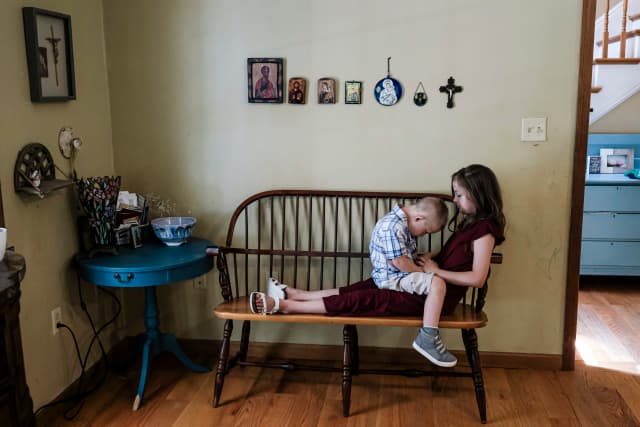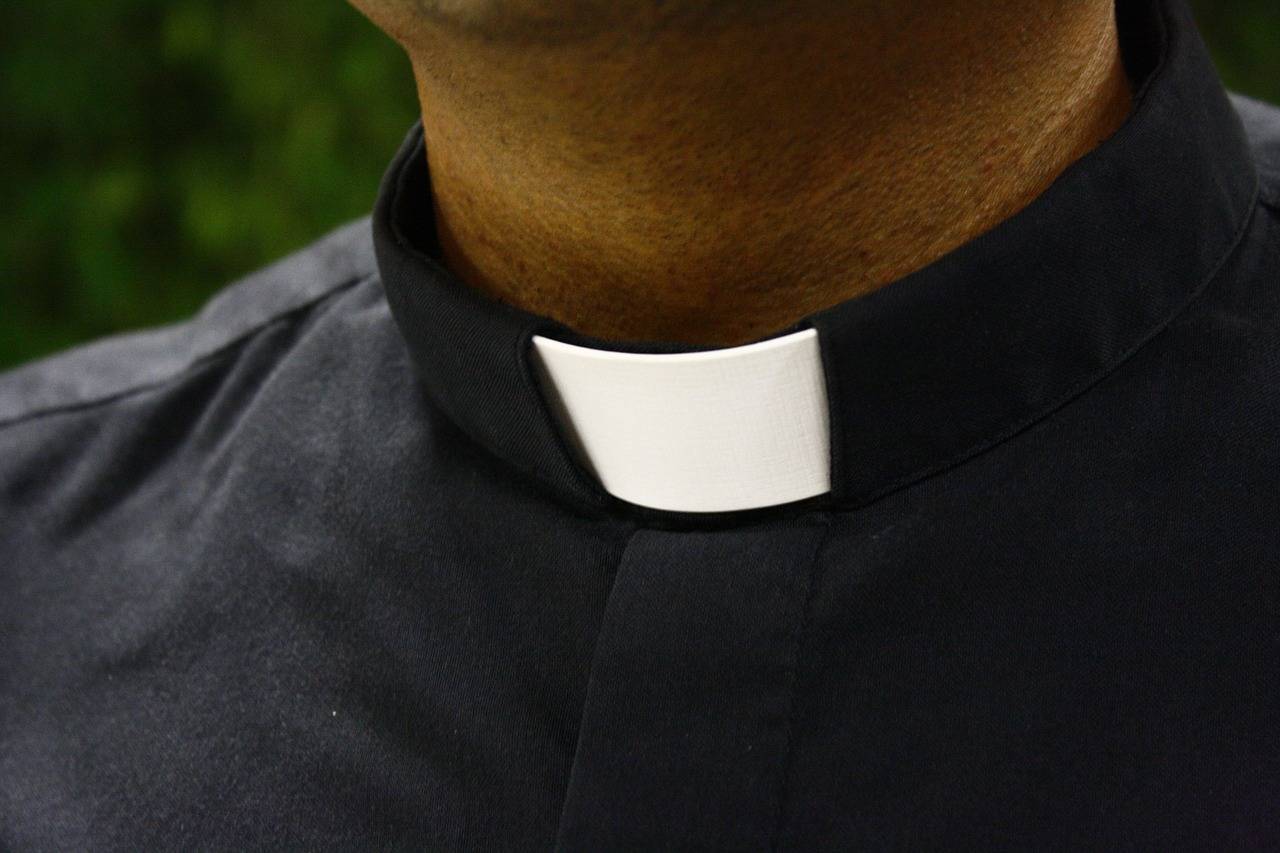NASHVILLE, Tennessee — Five years ago, Dan and Michelle Schachle of Dickson, Tennessee, prayed to Father Michael McGivney, founder of the Knights of Columbus, to intercede with God to save their son, still in his mother’s womb, who was given no hope of surviving a life-threatening case of fetal hydrops.
When the condition, which is a dangerous accumulation of fluids throughout the body, disappeared, it triggered a long and complex process of evaluating whether a miracle attributable to McGivney’s intercession had occurred.
“It’s a strange thing to investigate, whether God has intervened in the world in an extraordinary way,” said Father Dexter Brewer, pastor of Christ the King Church in Nashville and a vicar general of the Diocese of Nashville and former judicial vicar of the diocese, who oversaw the local tribunal investigating the miracle.
“It’s all very formal, and very intense,” Brewer said of the process, which involved dozens of interviews, examinations of medical evidence, months of work, and a very specific submission process to the Vatican’s Congregation for the Causes of Saints.
The process begins in the diocese where the miracle occurred, explained Brian Caulfield, vice postulator of Father McGivney’s sainthood cause.
The local bishop, which in this case was Bishop David R. Choby, appoints members of a tribunal to gather all the facts of the case. (Choby died in 2017.)
“They weren’t leaving the question of is this a miracle to us,” Brewer told the Tennessee Register, Nashville’s diocesan newspaper. “We collected the information and passed it along to the Vatican. We didn’t make a recommendation or judgment.”
The investigation began in 2016, and it was the first time in the Diocese of Nashville’s history that what was believed to be a miracle had been formally investigated.
“Basically, a miracle is defined as an extraordinary event that has no current medical or scientific explanation,” Caulfield said.
To verify an event is a miracle, “you have to prove two things,” Caulfield said. “The first thing is to prove this was a healing that’s not explained by medical science.”
The second is to clearly identify who people were praying to for their intercession, in this case, whether the intercession of McGivney was clearly invoked, Caulfield said.
Before the official investigation opened, Vatican officials visited Nashville to place the members of the tribunal under oath and walk them through the process. At the time, said Dr. Fred Callahan, “it was top secret.”
Callahan, a neurologist and close friend of Choby, was asked by the bishop to lead the medical side of the investigation.
Callahan was personally present for each of the detailed interviews with about 20 different Vanderbilt University Medical Center physicians who cared for Michelle Schachle during her pregnancy and after the birth of Michael (“Mikey”), the Schachles’ 13th child, as well as other maternal-fetal medicine specialists familiar with the case.
Callahan had learned about hydrops as a medical student, “in the remote past.” He had to refamiliarize himself with the condition “so I could ask the right questions,” he said. “I didn’t want this to fail because of my failures.”
Callahan, with help from tribunal member Valarie Cooper, had to work diligently for months to schedule and conduct the interviews, navigate HIPPA privacy regulations to assemble medical records and reports, ultrasound imaging, and ultimately compile a full dossier of evidence to send to the Vatican.
Callahan said he felt the weight of the task, because “the medical portion of the investigation would determine whether it was a miracle.”
The other key part of the investigation was whether the miracle is truly attributable to the intercession of McGivney. “The Vatican had very precise questions about the timing and the prayers, who prayed when, and to whom,” said Father Brewer.
The tribunal needed “to see if there was a correlation between the prayerful petition and the medical cure,” said Callahan.
The Schachles were certain their prayers to McGivney resulted in God curing their son of the condition that almost certainly would have killed him before he was born or shortly after. They told the interviewers how they specifically prayed for the intercession of McGivney and asked so many others to do the same.
Knights of Columbus around the world had simultaneously been offering up prayers for McGivney’s canonization.
Beyond witnessing the faith of the Schachle family, one of the most rewarding experiences of serving on the committee, Callahan said, was seeing how the medical team members who cared for Michelle and Michael Schachle, who is now 5 years old, “had been transformed by the outcome” of the case.
Multiple physicians recommended that Michelle Schachle terminate her pregnancy because the diagnosis was so bleak. “Our society has a lot of judgments about the value of life, and the disposable nature of life,” Callahan said.
Maybe after their experience with the Schachles, some of those physicians won’t be so quick to make that judgment, Callahan said.
After talking with the doctors, Callahan said, he could tell that this case “appropriately tickled their intellect, but even bigger, it changed their hearts.”
After the Nashville tribunal compiled its findings — sealed and tied in red ribbon — and sent them off to Rome, it was up to the Congregation for Saints’ Causes to review the information and make a recommendation to Pope Francis whether the case was indeed a miracle.
The tribunal’s findings first went to the postulator of McGivney’s sainthood cause, Andrea Ambrosi, a civil and canon lawyer in Rome, Caulfield said. He had the findings translated into Italian and then presented them to the congregation.
The postulator, who must be certified to present cases before the Congregation for the Causes of the Saints, “puts together the strongest possible case, as any lawyer would, taking the facts and presenting them in the most convincing way,” Caulfield said.
After assuring the record is in the proper canonical form, it is reviewed by a panel of medical experts, practicing physicians and medical professors in Rome, who aren’t necessarily religious, Caulfield said. With their review complete, “one day in Rome, they get together and cast their votes. Is this a miracle or not, can we explain this or not,” Caulfield said.
“It went through the medical commission pretty easily,” Caulfield said of the Schachle case. “That’s the huge hurdle.”
Next the case is reviewed by a theological commission that examines the question of whether the cure can be attributed to McGivney’s intercession, Caulfield said.
“They came down yes, there was more than ample evidence that Father McGivney was invoked exclusively,” Caulfield said.
On May 27, the Vatican announced Pope Francis had signed the decree recognizing the miracle through the intercession of McGivney. Once he is beatified, he will be given the title “Blessed.”
The beatification ceremony will be scheduled in the fall in the Archdiocese of Hartford, Connecticut, where his sainthood cause was formally opened in 1997, and he was given the title “Servant of God.”
In March 2008, the Catholic Church recognized the priest heroically lived the Christian virtues, giving him the title “Venerable.”
Generally, two miracles attributed to the candidate’s intercession are required for sainthood — one for beatification and the second for canonization.
Laurence is a staff writer at the Tennessee Register, newspaper of the Diocese of Nashville. Andy Telli, managing editor, contributed to this story.















